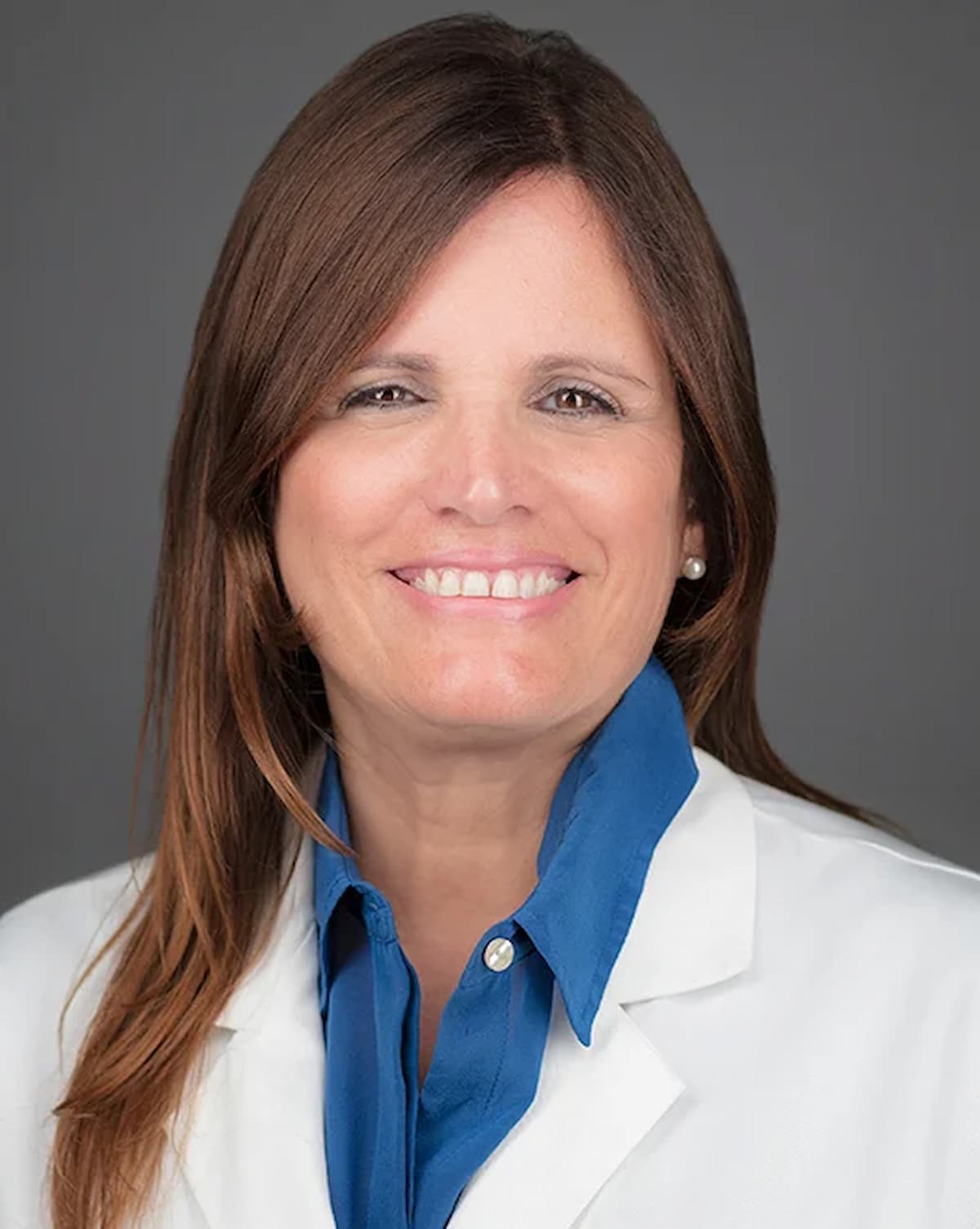Comparing CAR T Safety, Efficacy in Relapsed/Refractory Multiple Myeloma
The expert panel discussed the efficacy observed with cilta-cel in patients with relapsed/refractory multiple myeloma.
Surbhi Sidana, MD, Associate Professor of Medicine, Blood and Marrow Transplantation and Cellular Therapy, Clinical Research Group Coleader for BMT/Cell Therapy, Stanford Cancer Institute

Doris Hansen, MD, Assistant Member, Department of Blood and Marrow Transplant and Cellular Immunotherapy, Moffitt Cancer Center

Melissa Alsina, MD, Associate Professor, Department of Blood and Marrow Transplant, Head of Multiple Myeloma Transplant Program, Moffitt Cancer Center

Leyla Shune, MD, Associate Professor, Hematologic Malignancies and Cellular Therapeutics, University of Kansas Cancer Center

In a recent Around the Practice® program, CancerNetwork® hosted a panel discussion surrounding a clinical comparison of the efficacy and safety of ciltacabtagene autoleucel (cilta-cel; Carvykti) and idecabtagene vicleucel (ide-cel; Abecma) in patients with relapsed/refractory (R/R) multiple myeloma. The panel began with a discussion of findings from a retrospective comparative analysis of the agents published in the Journal of Clinical Oncology, followed by considerations for choosing between treatments.1 Furthermore, the panel ascertained risks and benefits associated with cilta-cel use in earlier lines of therapy and concluded by reviewing relevant data regarding the safety profile of ide-cel, particularly among multiple myeloma populations with central nervous system (CNS) involvement.
The panel was led by Surbhi Sidana, MD, associate professor of medicine for blood and marrow transplantation and cellular therapy and clinical research group coleader for bone marrow transplant/cell therapy at Stanford Cancer Institute. Panelists included Doris Hansen, MD, assistant member in the Department of Blood and Marrow Transplant and Cellular Immunotherapy at Moffitt Cancer Center; Melissa Alsina, MD, associate professor in the Department of Blood and Marrow Transplant and head of the Multiple Myeloma Transplant Program at the Moffitt Cancer Center; and Leyla Shune, MD, associate professor of hematologic malignancies and cellular therapeutics at the University of Kansas Cancer Center.
Comparing Cilta-Cel and Ide-Cel Efficacy and Safety Data in R/R Multiple Myeloma
Sidana: Given that there has been no clinical trial [comparing cilta-cel and ide-cel], this is the best study we have today that was published earlier this year in [the Journal of Clinical Oncology]. Can you speak to that, and what were the highlights of the findings?
Hansen: This was a large multicenter analysis that included patients who were treated or had leukapheresis for standard-of-care ide-cel and cilta-cel, about 641 patients in total. Of those, 586 were infused. The attrition rate was mostly due to disease progression. We had 350 patients who received ide-cel and 236 who received cilta-cel.
We used inverse probability of treatment weighting to compare differences between products and balance any confounders between the 2 treatment arms, and we looked at outcomes in terms of safety, efficacy, and survival. What we found is that patients receiving cilta-cel had a higher incidence of certain toxicities. Particularly, they were more likely to experience severe cytokine release syndrome [CRS] infections as well as non–immune effector cell associated neurotoxicity syndrome [ICANS] neurologic toxicities. There was a trend for higher second primary malignancies, but the number was small, and certainly there is a survival bias in the cilta-cel cohort.
If we think about it from an efficacy perspective, patients receiving cilta-cel had better and deeper responses [with] a significantly improved progression-free and overall survival [OS], whether it be in the intention-to-treat [population] but also [in] the infused cohorts in the study.
Considerations for CAR T-Cell Therapy Use
Sidana: What factors do you consider when recommending ide-cel vs cilta-cel?
Shune: It is 2025, so patients are coming to me earlier and earlier. I know that our topic is for relapsed/refractory [populations], but people are coming to us for CAR [chimeric antigen receptor] T consideration much earlier [in treatment]. The first thing [to consider] is FDA level indication. Based on [the phase 3] CARTITUDE-4 trial [NCT04181827], cilta-cel is FDA approved for patients who have received 1 [prior] line of therapy and [have] lenalidomide [Revlimid]-refractory [disease].2,3 Somebody could come to me for CAR T evaluation at second line, and the only product I can offer them at that time is cilta-cel. Now beyond second-line CAR T consultation, we can [give] ide-cel based on the phase 3 KarMMa-3 trial [NCT03651128].4 Beyond that, we can use our [phase 1b/2] CARTITUDE-1 trial [NCT03548207] data or KarMMa trials.5 In today's world, most CAR T is infused much earlier than the fifth line.
If somebody comes to me in the clinic for CAR T consultation, if they are second line, the only [therapy I am considering is] cilta-cel. Let us assume it is the third or fourth line: How do I approach it? I start with small summaries of KarMMa-3 and CARTITUDE-4, and I present [those] to the patient. I say, “CAR T is an autologous T-cell product. It takes time to collect, engineer, and bring it back to our center for infusion.” I look at the [patient’s] disease tempo. If they have rapidly progressive disease that [needs treatment] right away, maybe CAR T is not the best therapy––maybe I may have to go to something else at that time. That is No. 1. No. 2 [is] the patients who are considered high-risk. If [a patient] is relapsing within 18 months of the initial therapy, these are functional, high-risk patients who will likely not benefit from additional chemotherapy, and I will channel them toward CAR T.
Which product should I choose? Recently, patients have chosen what they want because they are savvy. They are knowledgeable. They attend a lot of support groups. Their biggest focus is PFS [progression-free survival]—they want a prolonged PFS. Based on CARTITUDE-1 and CARTITUDE-4, we can tell cilta-cel has a prolonged PFS. Then based on our real-world data, [there] is a PFS and OS advantage with cilta-cel. However, there is [the risk of] delayed neurotoxicity. If a patient already has underlying parkinsonism or some neurogenic disease, I may be a bit [hesitant] to do CAR T at that time. I may go toward a bispecific T-cell engager, which has less non-ICANS toxicity.
[Another consideration] is patients who are frail. I give everybody a fair chance. Everybody goes through a frailty evaluation. Some patients are frail because the myeloma is active, so maybe after I collect and [conduct] bridging therapy, they can handle the CAR T better. These are some of the factors I think about. The biggest driver for patients is the PFS and OS advantage that cilta-cel has over ide-cel, and they are willing to even take on the risk of delayed neurotoxicity and secondary primary malignancy because they understand that myeloma is a lifelong illness, so they want the best advantage available to them.
Elucidating CAR T Benefit in Earlier Lines of Therapy
Sidana: Are you offering CAR T to every second-line patient, or are you choosing some patients over others? How are you approaching this, especially with the PFS and OS benefit that we have seen?
Shune: [A patient] who is progressing early, who is functional, high-risk––that is a no-brainer. I would offer them CAR T, because [with] additional therapy, we have shown in trials that CAR T has superior PFS there and is always [advantageous]. Everyone else [must consider] access. Some people have no caregivers. They live far away from our center. Are they willing to relocate to come up here? I also worry about attrition.
I sit down with patients, and I tell them about the CAR T approval, the PFS advantage, and emphasize the toxicity, the time commitment, the time away from family and home, and being in Kansas City. Those are some of the factors I bring up to the patients, but I try to give it as an early intervention to people who are clearly high-risk, who I know will relapse quickly with second-line [therapy] and potentially die from multiple myeloma complications. Younger patients, functional, high-risk––high-risk from the get-go––those [patients receive] second-line CAR T.
Assessing Ide-Cel Non-ICANS Toxicity Risk
Sidana: Some of the trade-offs [with CAR T-cell therapy] are the risk of potential early onset toxicity in the first month and later, perhaps the risk of non-ICANS toxicity, although it was low point, [2%] for parkinsonism and 5% for cranial nerve palsy in CARTITUDE-4. Then the trade-off between second primary malignancies, which is also the trade-off we have with transplant in early life. Yet the PFS and OS benefit is just so strong. How do you look at this in your practice?… How do you make these trade-offs?
Alsina: A patient in the second line has many other options. The safety part is even more important. I worry about delayed neurotoxicities because even though, No. 1, in the late relapsed setting, we thought, “OK, these are only patients who have a high tumor burden that come to CAR T with bad disease.” We have learned from the data [that] giving cilta-cel early on is not the whole story.
You could have a patient who goes in with a low tumor burden and still develops these neurotoxicities. We have seen that in patients, for example, who get cilta-cel in the newly diagnosed setting in clinical trials and in second line. Evaluating the risk-benefit ratio in that patient population is even more important than in the late relapse.
It all depends on the patient whom you have in front of you. If you have a patient who has high-risk multiple myeloma based on how the disease has behaved [who experienced an] early relapse after first-line therapy, then we should [treat with cilta-cel]. But if I have a patient, for example, who has standard-risk myeloma by cytogenetics, the patient had already [received a transplant] 5 years ago, has been in remission for 5 years on [lenalidomide] maintenance…I would [likely] be more conservative with a patient like that.
If there is no clonal evolution, I might treat that patient with another second-line therapy and see how they behave and then [treat with] CAR T. I do not think we have any data to say that if I do the CAR T at that first relapse, it is going to be different than if I do it at second relapse. And if a patient has standard risk and [is] not a patient who is clinically high-risk, doing a second-line therapy would be okay. We still have [effective therapies]. A regimen like [carfilzomib (Kyprolis), pomalidomide (Pomalyst), and dexamethasone] or [carfilzomib, daratumumab (Darzalex), and dexamethasone] is an effective regimen that we can still use in that setting.
Sidana: Can you talk a bit about the incidence of these delayed neurotoxicities and other toxicities that were seen in [a retrospective analysis published in Blood]?6
Hansen: This was a large cohort across our institutions looking at outcomes of cilta-cel in the standard-of-care setting. We did see that the rates of severe CRS and severe ICANS were low, less than 5% as expected. When we go back to the non-ICANS neurologic toxicities, we saw that the rate overall was about 10%. We did see parkinsonism rate was a bit lower than what we saw in CARTITUDE-1, which was about 6%, so in a way, that was perhaps encouraging. This was the first cohort of patients where we might have been more selective; we might have been debulking them well, and then we did as I mentioned: cranial nerve palsies, particularly Bell palsy, [which] was most common. About 55% resolved those toxicities.
Nonrelapse mortality was about 10% and was mostly driven by infection. When these patients go back into the community, we must communicate with these providers in terms of how do we best support these patients, whether that be with prophylactic antibiotics, and currently, I would say probably most of us are doing primary prophylaxis with intravenous immunoglobulin for at least 3 to 6 months following CAR T-cell therapy. Vaccinations post treatment have been important, but optimizing ways in terms of supportive care to help improve outcomes and mitigate toxicity for these patients is important.
Sidana: There is some emerging evidence about using CAR T in patients with CNS myeloma. How do you address this in your clinical practice? And what do data show?
Shune: The European group presented their data at [the 2024 American Society of Hematology Annual Meeting].7 They had 10 patients with proven CNS involvement, and they gave them ide-cel, and they had 70% complete response rates and a PFS of 10 months, which is like ide-cel without CNS involvement. That was encouraging.
In my practice, if somebody has CNS myeloma, I collect for CAR T and then I do synesthetic therapy because we have shown in [another retrospective analysis that] those who are responding are those who do the best. We immediately institute intrathecal chemotherapy to try and get a handle on that. And then we move on to CAR T. More people will receive CAR T with real-world data supporting us.
References
- Hansen DK, Peres LC, Dima D, et al. Comparison of standard-of-care idecabtagene vicleucel and ciltacabtagene autoleucel in relapsed/refractory multiple myeloma J Clin Oncol. 2024;43(13):1597-1609. doi:10.1200/JCO-24-01730
- San-Miguel J, Dhakal B, Yong K, et al. Cilta-cel or standard care in lenalidomide-refractory multiple myeloma. N Engl J Med. 2023;389(4):335-347. doi:10.1056/NEJMoa2303379
- FDA approves ciltacabtagene autoleucel for relapsed or refractory multiple myeloma. FDA. February 28, 2022. Accessed June 24, 2025. https://tinyurl.com/yy2em5zv
- Rodriguez-Otero P, Ailawadhi S, Arnulf B, et al. Ide-cel or standard regimens in relapsed and refractory multiple myeloma. N Engl J Med. 2023;388(11):1002-1014. doi:10.1056/NEJMoa2213614
- Lin Y, Martin TG, Usmani SZ, et al. CARTITUDE-1 final results: phase 1b/2 study of ciltacabtagene autoleucel in heavily pretreated patients with relapsed/refractory multiple myeloma. J Clin Oncol. 2023;41(suppl 16):8009. doi:10.1200/JCO.2023.41.16_suppl.8009
- Sidana S, Patel KK, Peres LC, et al. Safety and efficacy of standard-of-care ciltacabtagene autoleucel for relapsed/refractory multiple myeloma. Blood. 2025;145(1):85-97. doi:10.1182/blood.2024025945
- Maulhardt M, Berning P, Hanoun C, et al. Efficacy of idecabtagene vicleucel (ide-cel) in patients with relapsed/refractory multiple myeloma and prior central nervous system manifestation: a retrospective real-world analysis. Blood. 2024;144(suppl 1):4759. doi:10.1182/blood-2024-202467
EP: 1.Late-Line R/R: Treatment Landscape
EP: 2.Outcomes and Factors for Consideration When Choosing Between CAR T Therapies
EP: 3.Comparing CAR T Safety, Efficacy in Relapsed/Refractory Multiple Myeloma
EP: 4.Role of Talquetamab as Bridging Therapy for CAR T-Cell Therapy
EP: 5.Optimal Sequencing Strategies for CAR T and Bispecifics in R/R MM
EP: 6.Role of CAR T in Earlier Lines for R/R MM
EP: 7.Non-ICANS and Delayed Neurotoxicity With CAR T: Risk Factors and Ways to Prevent
EP: 8.Real-World Data of SOC Cilta-Cel in R/R MM and Cilta-Cel in Patients With High-Risk Features
EP: 9.Identifying and Treating Patients With Adverse Prognostic Factors
EP: 10.Supportive Care: Infection Disease Prophylaxis and Advice for Community Doctors
EP: 11.Best Practices for Referring Patients for CAR T Therapy
Navigating AE Management for Cellular Therapy Across Hematologic Cancers
A panel of clinical pharmacists discussed strategies for mitigating toxicities across different multiple myeloma, lymphoma, and leukemia populations.